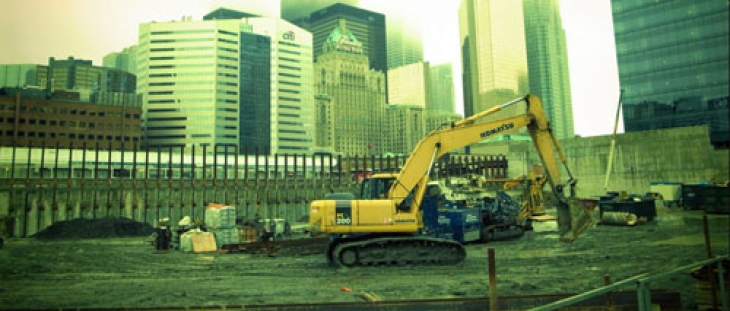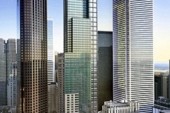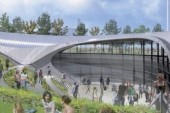
 Simon Carr Gary Wright, has spent the last four years at the helm of the city’s planning division as Chief Planner and Executive Director. Prior to that, he worked for over 33 years in a variety of positions in the same division. One could say that he’s a veteran in the field of city planning. He’s watched the city grow into the economic and cultural hub that it is today and has overseen some of the many inspiring development projects to hit Toronto in recent decades, including the evolution of Dundas Square. With retirement on the horizon in the new year, we decided to talk to Gary about his fruitful career and get his perspective on some of the burning development issues of the day. How long have you been working in city planning? What changes have you seen in the development of the city over the years? I have been working in city planning for 37 years. I started out as a community development officer which was a good way to start because it gave me the opportunity to work with local community groups. From there onwards, I had a variety of different jobs including manager of the BIA programme and Director of Community Planning for the West District. I have seen a lot of changes since the beginning of my career in planning, mostly in downtown Toronto, but also in the older parts of the city and the suburbs. The two things that stand out for me are: firstly, that the city today has a more intense living space then it did say 20 or 30 years ago as there is a lot more activity in terms of retail and the cultural industry. Secondly, the city has become much more diverse in terms of population and ethnicity. Do you think tall buildings are the only way forward for the city? Is there any alternative way that developers can create density in the city? I don’t think that tall buildings are the only way forward. In fact, I think we are going to be seeing a lot more mid-rise buildings around the city in the coming years. Mid-rise buildings can be 6 to 11 storeys high and a good example are the ones that are located along Sheppard Avenue going East from Yonge Street. I really think mid-rise buildings like these are an integral part of Toronto’s built form; they help to achieve our growth targets whilst also enhancing and revitalizing existing neighbourhoods. Tall buildings definitely have a place in the city too but I think they are more suitable for certain areas of the city, like the downtown region. What kind of an impact do you think the revitalization of the waterfront will have on our city? I think it’s going to have a very positive one. Waterfront Toronto have already made big improvements by building the Spadina wave deck. The reconstruction of Queens Quay Boulevard has been very positive. The revitalization project is going to be a great contribution to the city and I think we’re going to be seeing a lot more people wanting to be part of the waterfront and wanting to live there in the coming years. Which development projects did you find most challenging over the course of your career in city planning and why? I think it’s sometimes the smaller projects, which involve neighbourhoods, that can be the more challenging ones. For example I found a townhouse project that we did in Etobicoke to be quite challenging for this reason. Also, Dundas Square, which was a bigger project, was quite demanding because we had to liaise with a lot of people about legal issues and also, it was hard to control the budget. But on the whole, I would consider the smaller projects to be the more challenging ones. What is one of your favourite parts of the city? I worked in the West district, so I have a great fondness for Etobicoke and the Humber Valley. In terms of the older parts of the city, one of my favourite walks is from City Hall to St. Lawrence Market because I love the way the streets are narrow–the atmosphere in that part of the city is great. I grew up in Scarborough, so there are places there that I like visiting. I think it’s hard to pinpoint one place because there really are so many places in Toronto that I enjoy. How do you think Toronto will look like in 10 year’s time, in planning and development terms? At the moment there are 119 cranes in Toronto’s skyline which is more than Chicago, L.A. or any other major city have. So we can expect 100 or so buildings coming up over the next few years. Also, I think we will witness a growth in areas like Scarborough and North York and the LRT along Eglinton, which will be built within this time frame and will influence growth. Population has been growing at a rate of 15,000 – 20,000 per year in Toronto, so I think this trend will persist provided the economy continues to prosper and we get a regular flow of immigrants into the city.
Simon Carr Gary Wright, has spent the last four years at the helm of the city’s planning division as Chief Planner and Executive Director. Prior to that, he worked for over 33 years in a variety of positions in the same division. One could say that he’s a veteran in the field of city planning. He’s watched the city grow into the economic and cultural hub that it is today and has overseen some of the many inspiring development projects to hit Toronto in recent decades, including the evolution of Dundas Square. With retirement on the horizon in the new year, we decided to talk to Gary about his fruitful career and get his perspective on some of the burning development issues of the day. How long have you been working in city planning? What changes have you seen in the development of the city over the years? I have been working in city planning for 37 years. I started out as a community development officer which was a good way to start because it gave me the opportunity to work with local community groups. From there onwards, I had a variety of different jobs including manager of the BIA programme and Director of Community Planning for the West District. I have seen a lot of changes since the beginning of my career in planning, mostly in downtown Toronto, but also in the older parts of the city and the suburbs. The two things that stand out for me are: firstly, that the city today has a more intense living space then it did say 20 or 30 years ago as there is a lot more activity in terms of retail and the cultural industry. Secondly, the city has become much more diverse in terms of population and ethnicity. Do you think tall buildings are the only way forward for the city? Is there any alternative way that developers can create density in the city? I don’t think that tall buildings are the only way forward. In fact, I think we are going to be seeing a lot more mid-rise buildings around the city in the coming years. Mid-rise buildings can be 6 to 11 storeys high and a good example are the ones that are located along Sheppard Avenue going East from Yonge Street. I really think mid-rise buildings like these are an integral part of Toronto’s built form; they help to achieve our growth targets whilst also enhancing and revitalizing existing neighbourhoods. Tall buildings definitely have a place in the city too but I think they are more suitable for certain areas of the city, like the downtown region. What kind of an impact do you think the revitalization of the waterfront will have on our city? I think it’s going to have a very positive one. Waterfront Toronto have already made big improvements by building the Spadina wave deck. The reconstruction of Queens Quay Boulevard has been very positive. The revitalization project is going to be a great contribution to the city and I think we’re going to be seeing a lot more people wanting to be part of the waterfront and wanting to live there in the coming years. Which development projects did you find most challenging over the course of your career in city planning and why? I think it’s sometimes the smaller projects, which involve neighbourhoods, that can be the more challenging ones. For example I found a townhouse project that we did in Etobicoke to be quite challenging for this reason. Also, Dundas Square, which was a bigger project, was quite demanding because we had to liaise with a lot of people about legal issues and also, it was hard to control the budget. But on the whole, I would consider the smaller projects to be the more challenging ones. What is one of your favourite parts of the city? I worked in the West district, so I have a great fondness for Etobicoke and the Humber Valley. In terms of the older parts of the city, one of my favourite walks is from City Hall to St. Lawrence Market because I love the way the streets are narrow–the atmosphere in that part of the city is great. I grew up in Scarborough, so there are places there that I like visiting. I think it’s hard to pinpoint one place because there really are so many places in Toronto that I enjoy. How do you think Toronto will look like in 10 year’s time, in planning and development terms? At the moment there are 119 cranes in Toronto’s skyline which is more than Chicago, L.A. or any other major city have. So we can expect 100 or so buildings coming up over the next few years. Also, I think we will witness a growth in areas like Scarborough and North York and the LRT along Eglinton, which will be built within this time frame and will influence growth. Population has been growing at a rate of 15,000 – 20,000 per year in Toronto, so I think this trend will persist provided the economy continues to prosper and we get a regular flow of immigrants into the city.














